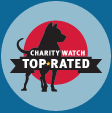Access to lasting water, sanitation, and hygiene solutions leads to life-transforming benefits that position communities to begin stepping out of generational poverty:
- Children lead healthier lives, and child death rates decrease due to a decline in water-related diseases.
- Children attend school more regularly and have more time to study, as they no longer spend their days searching for water or staying home due to water-related illnesses.
- Families have the resources necessary to water crops and grow healthy food, leading to better nutrition for children.
- Parents are freed from the constant burden of finding and carrying water, allowing them to better provide and care for their children.
The results of a lack of access are tragic — and largely preventable:
- Every day, nearly 1,000 children younger than 5 die from diarrhea caused by contaminated water, poor sanitation, and unsafe hygiene practices.*
- Half of all malnutrition is associated with diarrhea or intestinal infections resulting from unsafe water, inadequate sanitation, or insufficient hygiene.*
- In a group of surveyed developing countries, less than half of primary schools have access to safe water and sanitation.*
- Globally, women and children spend 200 million hours collecting water each day, often making multiple trips.
- Women and girls are responsible for water collection in more than 80 percent of households in 61 developing countries.**
*Progress on Sanitation and Drinking Water: 2015 Update and MDG Assessment, UNICEF and World Health Organization
**WHO/UNICEF, Safely Managed Drinking Water, 2017, p.30
World Vision's Approach
World Vision is the largest non-governmental provider of clean water in the developing world, reaching one new person with clean water every 10 seconds.
For 30 years, World Vision’s work in clean water, improved sanitation, and hygiene has resulted in deep expertise and a refined approach to reaching people with clean water. Applying experience derived from decades of work, along with constantly piloting and testing technologies, allows us to continually increase efficiency and expand our reach year over year.
World Vision has more than 700 in-region water, sanitation, and hygiene experts among our 46,000 staff worldwide. Our teams of technical experts use cost-effective, proven approaches to co-create sustainable water, sanitation, and hygiene solutions that last. As residents of the countries where they work, they know firsthand the culture, history, and the unique water-related needs of the areas they serve.
Life-saving Interventions
- Bring clean water access through right-sized equipment and use of appropriate water sources, manual drilling, and mechanized wells with solar pumps — increasing equitable access for all and improving child well-being
- Install sanitation facilities and provide critical sanitation and hygiene training with the goal of eliminating open defecation and increasing access to basic, improved sanitation and hygiene for all
- Train local people as mechanics to repair and maintain their water points for longer life, empowering communities to sustainably manage water systems long after World Vision’s work is done
Sustainable, community-based approach
World Vision’s work results in water that continues to flow in thousands of communities worldwide. An independent study conducted by one of the premier academic groups in water research, the University of North Carolina Water Institute, showed that nearly 80 percent of World Vision wells studied continued to function at high levels even after 20 years.* This significant increase above industry standard is thanks largely to our integrated community engagement model.
The core component of our model is the formation of water, sanitation, and hygiene committees who collect small fees to pay for water point repairs as needed — an approach that helps ensure communities have the knowledge and financial resources to keep their water points working smoothly. We train community members in operation and maintenance before any water infrastructure is installed.
World Vision also develops the most appropriate clean water source for each community. We use many different types of wells — shallow, tube, borehole, hand-dug, machine-dug, and deep-water — in addition to mechanized, solar, and gravity-fed distribution systems. When fresh spring water is available, we can protect and cap it to provide water to nearby communities. And we often use rainwater-harvesting systems to provide clean water at schools.
Because we invest an average of 15 years in a community, local people take ownership of the water points and are equipped to maintain and repair their water sources for long-term sustainability.
World Vision's partnership highlight: Sesame Workshop and Raya
A new friend from Sesame Street™ is partnering with World Vision to spread the word about the importance of proper sanitation. Along with her friend, Elmo, Raya is teaching children around the world about healthy hygiene and sanitation behaviors that can dramatically improve the health of children and their families.
Reaching Schools with Clean Water
World Vision reaches an average of three new schools every day with water, sanitation, and hygiene interventions, which increase school attendance and overall child health.
- Constructing safe water points on school campuses or in the immediate vicinity
- Ensuring facilities are equally accessible to children with disabilities
- Building gender-segregated, institutional latrines and hand-washing facilities with soap for both schoolchildren and teachers





Get The Word Out